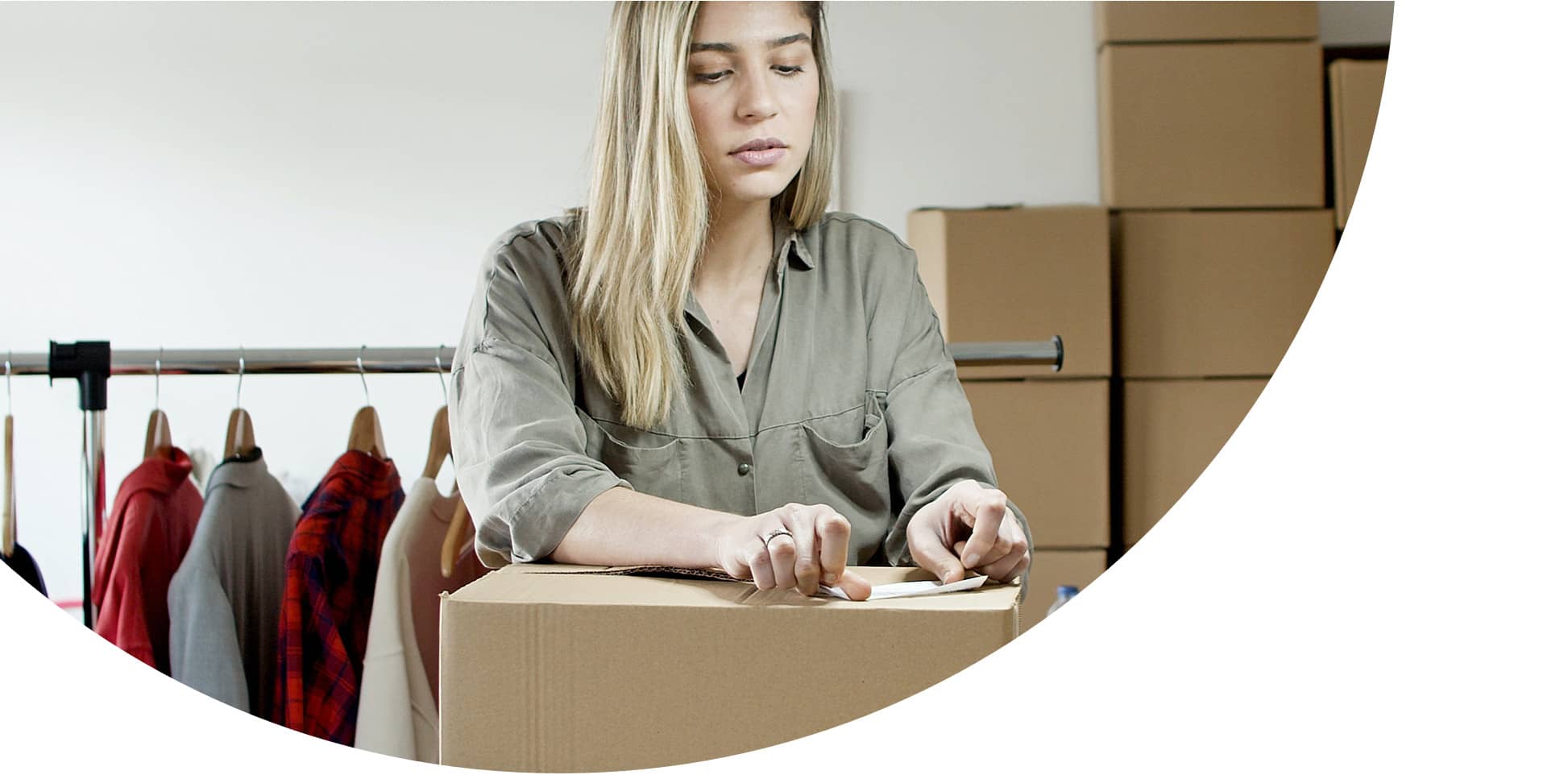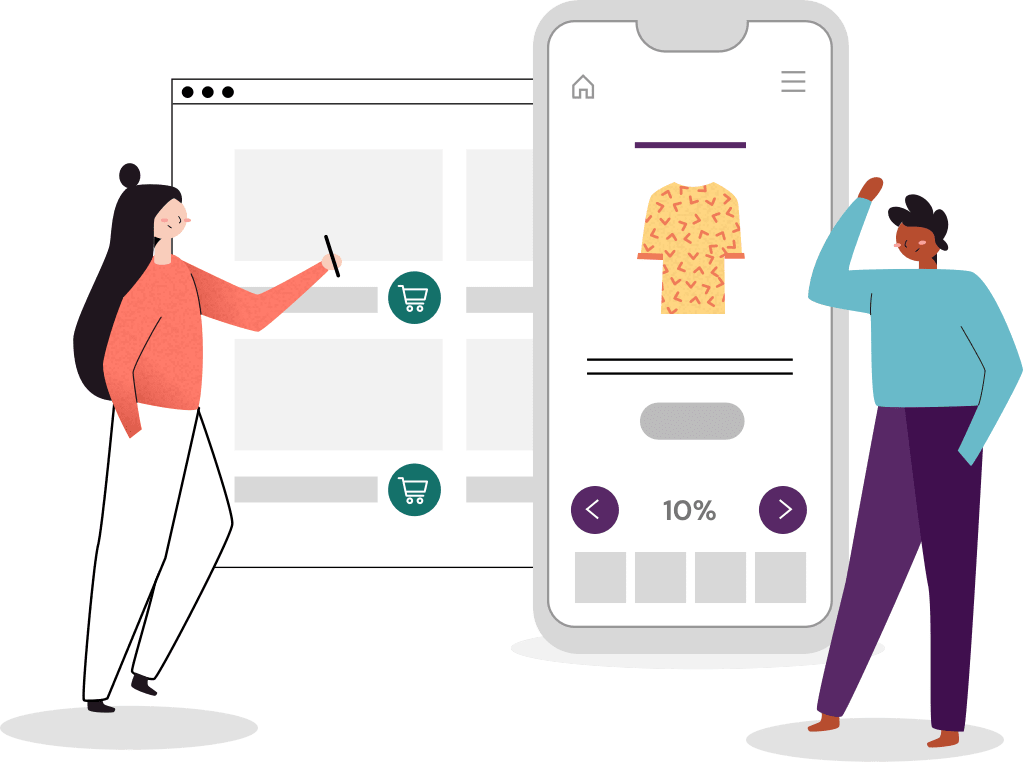What further steps can you take to encourage more visitors to become buying customers? Well, the answer to that question is: Shopify store conversion rate optimisation.

Now that your Shopify store is up and running, and you’re generating some good traffic online, you may be wondering why you’re not making sales.
What Are Conversions?
A “conversion” occurs any time that a site visitor completes a predetermined objective on your website. For ecommerce companies, the main goal is usually when a customer purchases a product but can also be things like signing up to a newsletter or sharing a product on social media.
Accordingly, your conversion rate is calculated by dividing the number of conversions by the number of unique site visitors. You then multiply this value by 100 to arrive at your figure.
However, knowing what your Shopify conversion rate is and actually understanding it are two different things. How do you know if your conversion rate is high or low? Read on to find out what is considered a “good” conversion rate.

Understanding “Good” and “Bad”
Conversion Rates
According to Shopify analytics service LittleData, the average conversion rate was 1.6% across the platform in 2020. They explain that stores with 3.6% or higher are in the top 20% of performers on Shopify. This is unquestionably a good conversion rate.
Conversely, stores with a conversion rate of 0.4% or less are in the lowest 20% of performers on Shopify. This type of performance should be addressed as a matter of urgency.
However, it should also be noted that conversion rates differ across different industries. For instance, in February 2021 the food and drink industry had an average conversion rate of 2.02%.. By contrast, it was 3.01% for the arts and crafts market. So, bear in mind these differential figures when assessing your own Shopify conversion rate.
Why You Should Care About
Your Conversion Rate
Your conversion rate is one of the most important metrics for your ecommerce business. Increasing this figure is the most cost-effective way of generating higher sales. Additionally, undertaking Shopify conversion rate optimisation provides a number of fringe benefits. These include improving the user experience of your store and providing insights into customer satisfaction.
The Secrets to Effective Shopify Store
Conversion Rate Optimisation
Now that you understand what conversion rates are, and why they’re so important, we’re
going to discuss how to improve yours. By implementing the following steps on your store,
you should quickly experience higher Shopify conversion rates.
Optimise Your Store for
Customers Using Mobile Devices
72.9% of all ecommerce sales in 2021 are projected to happen on mobile devices. As such, it’s clearly sensible to focus on improving conversion rates for visitors on phones and tablets.
Key to this is ensuring that your site is mobile-responsive. Fortunately, this is an area in which Shopify really shines, with themes that are specifically designed to support mobile browsing. However, there are additional steps you can take, such as implementing a simple site navigation, to further optimise your store for mobile.
Enhance Your Site’s Speed
Online shoppers won’t hesitate to leave an ecommerce website should the user experience be substandard. If your store is slow or unresponsive, they may well drop off, right into the arms of your competitors.
A crucial aspect in this regard is your page loading times. Research has shown that as load times increase from 1 second to 10 seconds, site abandonment jumps from 32% to 123%..
There are a number of measures you can take to address this. These include:
- Reducing the size of your site’s images.
- Picking a fast Shopify theme and making sure it’s kept up to date.
- Limiting the number of apps you use on your store, as they slow down your site’s performance.
Organise Your Categories
in a User-Friendly Manner
Another website element that will put visitors off, thereby reducing conversions, is having a confusing system of categories. The major pitfall to avoid here is having too many top-level categories. Instead, create around five or six main categories, which you can then further divide into subcategories.
Arrange these categories in your navigation bar according to their popularity, with the most sought-after at the top. This will facilitate customer journeys to your biggest selling items.
Only Use High-Quality
Images and Copy
Although reducing image sizes is a vital part of optimising your site’s speed, you shouldn’t sacrifice too much quality. It’s important that the photos on your site look vibrant and striking, to help bring your products to life.
By the same token, you need compelling copy that engages your visitors and subtly nudges them towards completing checkout.
Establish which Store Pages
are Losing Customers
A common mistake merchants make when trying to improve their conversion Shopify rates is thinking of the whole site as a single entity. Your Shopify store consists of a number of individual pages, and they’re each going to perform differently. Crucially, you need to work out which parts of your site are the ones losing the most customers.
To do this, you can leverage a diagnostic tool such as Google Analytics. This will allow you to track visitors from arriving at a landing page to leaving the site. Use this to establish where your problem areas are. Then you can implement targeted measures to improve these pages.
Avoid Unexpected Surprises
Another experience that is guaranteed to drive visitors away from your site is unexpected delivery costs. If this is only communicated at the checkout, customers can feel misled and subsequently abandon their order. The same is true with longer delivery times or products being out of stock.
By making any relevant information clear as early as possible, you’ll soften the blow considerably.
Streamline Your Checkout
An area, which hampers Shopify conversion rates for many stores is the checkout. The process of paying for products needs to be as simple, quick, and convenient as possible for customers. Offering the option to use a guest checkout, which doesn’t require creating an account, is highly recommended.
Reach Out to Customers who
Abandon Their Shopping Carts
Of all online shopping carts in March 2020, 88.05% were abandoned.. This staggering statistic underlines the importance of trying to claw back some of the orders that customers abandon.
This can be achieved by using email automation to encourage customers to return and complete their order. By providing a small incentive, such as a small discount, in a sequence of emails, you can significantly boost revenue.
Craft Engaging Thank You/
Order Confirmation Emails
Once the customer has finalised their order, you still have an opportunity to encourage them to make further purchases. You can do this by optimising your order confirmation emails. To customise these messages on Shopify, visit the ‘notifications’ section of the admin area. Then, write email templates that persuade customers to sign up to your newsletter, offer discounts on future purchases, or anything else that will tempt them back for more.
Implement a Reasonable
Shipping and Returns Policy
A great way of not just improving conversion rates, but also building brand loyalty, is to offer a good shipping and returns policy. Providing customers with free shipping, for instance, is an effective way of improving conversion rates.
Similarly, a clear refund policy will instil a sense of confidence in your visitors. This will increase the chances of potential customers converting into buying customers.
Optimise Your Site Using
A/B Testing
An extremely useful tool in Shopify conversion rate optimisation is A/B testing (sometimes referred to as split testing). This simply involves creating two different versions of the same element, such as a product page, and comparing their performance.
Run multiple and frequent tests to analyse how well your conversion rate optimisation efforts are doing. Then you can modify your strategy based on the results.

Solicit the Shopify Store Conversion
Rate Optimisation Specialists
While the foregoing tips will certainly assist in your conversion rates optimisation efforts, a team of specialists will help you achieve the best results. Get in touch with our Shopify experts to discuss your needs today. We’ll help to run tests and introduce effective new measures to increase conversions for your Shopify store.
Contact Us
Contact our expert Shopify team to chat
about what we can do for your brand.
about what we can do for your brand.
Stay Ahead with Digital Insights
Subscribe for sharp thinking, tech trends, and actionable ideas – delivered straight to your inbox.
